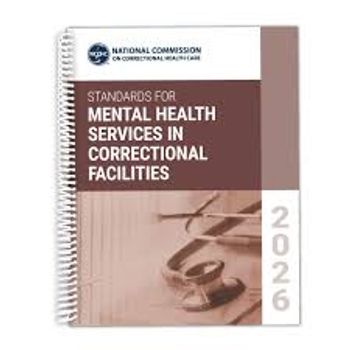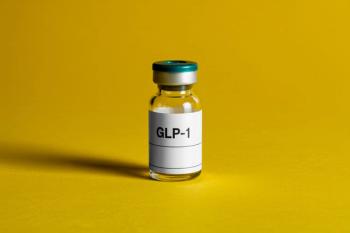
- Psychiatric Times Vol 26 No 11
- Volume 26
- Issue 11
The Case of Factitious Disorder Versus Malingering
Patients who exaggerate, feign, or induce physical illness are a great challenge to their physicians. Trained to trust their patients’ self-reports, even competent and conscientious physicians can fall victim to these deceptions.
Patients who exaggerate, feign, or induce physical illness are a great challenge to their physicians. Trained to trust their patients’ self-reports, even competent and conscientious physicians can fall victim to these deceptions. In doing so, the treating physician may unwittingly provide support for specious claims of illness or injury by conferring official diagnoses, or by delivering treatments that transform the patient from a pretender into a person with a genuine, although iatrogenic, medical problem (eg, via adrenalectomy, pancreatectomy, serial amputation).1-3
Forensic psychiatrists may be called on during civil or criminal litigation to help determine the authenticity of a patient’s apparent medical illnesses or injuries. Even when a patient’s medical deceptions are proved beyond any doubt, the forensic psychiatrist may be asked to help determine the underlying psychological processes that led to the deception. In other cases, the patient may pursue civil damages from the treating physician for performing unnecessary interventions, and the forensic psychiatrist is asked to weigh in on the culpability of a colleague for failing to detect the deception.4-6
The forensic psychiatrist faces 2 synergistically related obstacles. First, in contrast to malingering, there is little empirical research on the nature of factitious disorder, its underlying psychological processes, or ways to assess it. Second, despite the aforementioned lack of scientific evidence, DSM-IV-TR provides an artificially definitive classification system for patients with inauthentic illness behavior, to which the examiner’s conclusions are expected to correspond.
Consciousness, intentionality, and insanity in DSM
Many decisions in legal proceedings boil down to the question of consciousness and intention. Was the defendant aware of what he or she was doing, did he intend to do it, and was the motive for doing it reasonable? Conveniently, DSM-IV-TR categories dealing with inauthentic illness behavior (ie, behaving as if one is sick when one really is not) neatly address these questions.
The DSM somatoform disorders category specifies 5 disorders for which inauthentic illness behavior presumably is neither conscious nor intentional. These are somatization disorder, hypochondriasis, conversion disorder, pain disorder, and undifferentiated somatoform disorder. It specifies another category-factitious disorder-in which inauthentic illness behavior is consciously and intentionally produced. This category is reserved for people whose motives appear to reflect severe psycho-pathology (eg, a person who would agree to prophylactic double mastectomy just to get attention from medical personnel, friends, and coworkers).7DSM also recognizes cases of malingering (as a “V” code, not a true psychiatric diagnosis) in which the inauthentic medical behavior is conscious, intentional, and reflects more comprehensible motives (eg, faking a fall in a retail store to get millions of dollars in compensation for medical and emotional damages).
Without detailing the full DSM diagnostic criteria sets for these disorders and their relations, the following is a summary of how DSM instructs psychiatrists to diagnose cases of inauthentic illness behavior:
1. In the absence of overwhelming affirmative evidence of intentional medical deception (eg, caught on video, evidence from a room search), diagnose a somatoform disorder.
2. If there is traditional forensic evidence of overt medical deception, diagnose malingering or factitious disorder.
3. If there is any significant material or instrumental benefit from the intentional medical deception (eg, financial settlement, disability determination, access to narcotic medicine), diagnose malingering.
These 3 categories are mutually exclusive, and there is no hedging.
Anyone with even minimal experience in dealing with patients with complex and suspicious medical histories recognizes how inadequate and oversimplified DSM directives are. The criteria make it virtually impossible to diagnose a case as anything other than a somatoform disorder when intentionality cannot be proved with traditional forensic evidence. There are no psychological tests of consciousness, and even strong evidence of a relationship between the occurrence of inauthentic illness behavior and tangible benefits would not suffice to overrule a somatoform diagnosis. Thus, in cases dominated by subjective complaints like pain, fatigue, and weakness, it is virtually impossible to definitively diagnose factitious disorder or malingering.
Just as there is a built-in DSM bias toward somatoform disorder over factitious disorder and malingering, there is a similar bias toward malingering over factitious disorder. Malingering is to be diagnosed when tangible or instrumental benefits accrue from intentional inauthentic illness behavior. In almost every case of genuine illness, benefits are bestowed on the patient. The patient receives extra care and concern, may be placed on paid work leave, is allowed to pass on dinner with the in-laws, and so on. These things happen to virtually everyone who becomes ill or injured, but none of this informs the question of whether inauthentic illness behavior was designed to secure those benefits. There is a difference between a motive and a consequence.8
What are left over for the factitious-disorder category are cases in which patients subject themselves to painful, embarrassing, or debilitating self-harm and medical interventions for no good reason. A malingerer takes a mild fall in a restaurant and gets a half million dollars; a factitious-disorder patient allows both her breasts to be removed so that she can play the role of medical patient for a couple of months.
There are countless scenarios in which malingering might be the product of financial desperation, a desire to escape physical or emotional abuse, or other causes.
The behavior of any patient who meets the stringent DSM criteria for factitious disorder strikes the average lay person as truly insane. In fact, clinical experience with dozens of prototypical cases suggests that few patients with factitious disorder-even the extreme Munchausen variant-have any overt signs of thought disorder, disorganized behavior, or psychotic symptoms. Nevertheless, experienced forensic experts who specialize in these types of cases remark that judges and jurors find it hard to believe that such a sane-looking person could have purposefully poisoned himself, or caused his own sepsis, as examples.
There are several implications of the DSM criteria sets for forensic psychiatrists in cases that involve alleged inauthentic illness behavior. First, because of the flaws and biases in DSM, arriving at a DSM diagnosis may not get the examiner or his or her client any closer to the truth of what has transpired in the case at hand. Second, despite its flaws, DSM can and will be used by opposition experts to support the opposition’s theory of the case. Rejoining that there are no data to support the DSM framework is a double-edged sword: there is also no body of evidence to support one’s alterative interpretations.
The differences between factitious disorder and malingering
When confronted with a patient with a factitious disorder, many people find it difficult to fathom someone’s inducing symptoms without the principal objective of external gain. However, for individuals who engage in this behavior, the motivation to play the sick role provides covetous interpersonal benefits. Diagnostic criteria specify that the individual intentionally produces or feigns psychological or physical symptoms without evident external motivations. In assigning this diagnosis, one can specify whether the behavior manifests with predominantly psychological signs and symptoms, predominantly physical signs and symptoms, or a combination of both.9
Factitious disorder is always indicative of psychopathology and may be accompanied by pseudologia fantastica (the telling of tales that are a mlange of fact and fiction).10 Patients who exhibit pseudologia fantastica are usually florid; when questioned, however, these individuals give vague and inconsistent answers regarding the symptoms per se.
DSM-IV-TR suggests that malingering should strongly be considered if one or more of the following contextual factors are present:
• The patient is currently involved in litigation (most often disability claims are in dispute)
• There are noticeable differences between the individual’s claims and objective findings by a health care professional
• The patient is uncooperative in assessment or treatment attempts
The presence of an antisocial personality disorder should also be considered a possible comorbid diagnosis. However, while reasonably sensitive, the findings showing possible comorbidity with antisocial personality disorder have a low specificity.11
Despite the dualism presented in DSM-IV-TR, experience proves that factitious disorder and malingering often co-occur. For instance, a patient starting out with factitious disorder may find it necessary to malinger to “save face” in front of others who question why the patient is not pursuing legal remedies for the apparent medical malpractice that has actually resulted from self-harm.12 Generally, however, the malingerer will attempt to minimize contact with med-ical professionals and testing because each visit or test provides an opportunity for detection; in contrast, the person with factitious disorder welcomes the opportunity to play the role of patient and finds it intrinsically gratifying.
Formal assessments range from clinical guidelines for detecting signs and symptoms that are common to factitious disorder and malingering to formal personality and neuropsychological test batteries.12-17 Although measures built into some tests assist in detecting feigning, these are generally limited to detecting false neurocognitive impairment; such measures do not assess the motivations behind the deceptions. The assessment of internal versus external motivations is often more of an art skill than an objective undertaking.
As suggested, persons with factitious disorder may take their falsification of illnesses and injuries further than is seen in cases of malingering, where the goal is more discrete. The patient’s presentation may not match the diagnostic criteria for the disorder but rather the patient’s conceptualization of how the disorder should manifest.18 Symptom complaints may be unduly numerous or emphatic, or improbable in their combination or severity.14 A survey of neuropsychologists by Slick and colleagues19 found that clinicians often do not use the explicit labels of malingering or factitious disorder but merely indicate that their assessment of the patient’s symptoms was inconsistent with the proposed illness or injury.
There is an inherent uncertainty in differentiating malingering from factitious disorder. Drob and colleagues20 articulated several concerns that psychiatrists may face when evaluating these cases for forensic purposes. They note that there is a specific disadvantage in diagnosing malingering because it depends on the context rather than on the presence or absence of diagnostic criteria. In addition, other pathology comorbid with either malingering or factitious disorder can cloud the diagnostic picture.20
Several case decisions have intensified the standards that forensic psychiatrists must use to detect malingering).21 These decisions have made it necessary for psychiatrists to use measures with accepted reliability in the scientific community more often than their personal expertise and clinical knowledge.22
Caveats for forensic psychiatrists
In the legal realm, the distinction between factitious disorder and malingering may have important implications. In a forensic evaluation, the recognition of either phenomenon has implications for the patient’s future, both legally and medically. In the legal context, not only are symptom presentations being called into question, but individuals who feign a medical disorder can also face criminal charges. These individuals may be prosecuted for false disability claims or charged with inappropriate use of health care resources by hospitals or their insurance companies.23 Furthermore, they themselves may bring charges against medical professionals for claims of malpractice that include explicit recognition of deception.
In interacting with these patients in medical practice, there are concerns about ethical obligations for treatment. Hamilton and Feldman12 question whether the doctor-patient relationship persists after the patient enacts medical deception, and question what responsibility the physician has once feigning is discovered. If the relationship is broken, does the physician have a responsibility to notify other professionals whom the patient may see so that they are not misled into providing unwarranted treatment? When individuals are “exposed,” an additional complication includes medical professionals’ bringing legal action for the misdirected, and often unreimbursed, medical services.3,23
One side or the other may use the existence of factitious disorder to advance the claim that the accused patient was legally insane and therefore not legally responsible for his actions. Each case must be considered individually. However, patients with factitious disorder rarely meet the criteria for legal insanity. In this respect, there is little practical significance to distinguishing between factitious disorder and malingering. However, it is reasonable to argue that the illness deceptions in factitious disorder bear a close relationship to compulsions and may represent a legitimate mitigating condition that is generally not present in malingering.
It is a mistake to assume that all malingerers are driven by shameless greed. There are countless scenarios in which malingering might be the product of financial desperation, a desire to escape physical or emotional abuse, or other causes. A fair and thorough evaluation of medical deception should include sufficient psychosocial history gathering to understand the context of medical deception.
Psychiatric reports of medical deception, particularly of cases involving factitious disorder, often make the curious assumption that a patient’s self-reported history about past abuse or another significant psychiatric event is somehow more trustworthy than all the lies, simulations, and obfuscations that are used to deceive doctors.
Professionals sometimes mistakenly assume that uncovering medical deception is sufficient proof that the patient is not really physically ill or injured. Medical deception does not ameliorate the risk of authentic disease or injury, however. In some cases, intentional exaggeration of symptoms might reflect a desperate attempt to get attention for a medi-cal problem that the patient actually has.
CASE VIGNETTE
Andrea, a 32-year-old part-time athletic coach, was a passenger in a van operated by the Police Athletic League of a major city. During an outing, the van and a car sideswiped each other. No injuries were evident among the riders in either vehicle, and no one requested or required medical intervention. Six months later, Andrea filed a lawsuit alleging that the incident had in fact caused a head injury that resulted in progressive paresis. By the time a psychiatric expert was retained by the defense, Andrea was ostensibly quadriplegic.
After completing a review of the extensive medical records, the expert found it incontrovertible that the patient was feigning her paralysis. Among other factors, he noted that it was unusual that a motor vehicle accident for which on-site medical evaluation and treatment were refused-one in which no head injury was initially reported-had culminated in ostensibly permanent disability.
Although the patient had seen an extraordinary number of medical providers, she reported that no intervention had ever helped her. However, her symptoms were disconfirmed by objective testing. Andrea’s statements were deemed inconsistent and misleading, and she was found to have lied floridly and gratuitously about her education and career. The medical records showed that she had had more than 60 hospitalizations after the accident for ailments that typically eluded formal diagnosis. In addition, she had generally signed out against medical advice after the recommendation of a psychiatric consultation or the opposition of the staff to her escalating demands for potentially abusable drugs.
Before the accident, Andrea was living in poverty. Following the accident, she received full-time home health care, maid services, workers’ compensation payments, and Medicaid. Weighing the potential motivations for Andrea’s behavior, the psychiatric expert opined that malingering was primary, with factitious disorder secondary. Noting that the patient had obtained at least 30 prescriptions for diazepam and meperidine during an 18-month period, he indicated that the goals of the malingering included acquisition of abusable drugs, the disability entitlements and, most important, the potential financial windfall from the litigation. Factitious disorder was indicated by the severe and chronic nature of her falsified signs and symptoms, her pseudologia fantastica, and her itinerancy (ie, the triad for the diagnosis of Munchausen syndrome).
Because of the breadth and duration of the symptoms, the associated litigation, and the inappropriate procurement of resources that had already taken place, the psychiatric expert predicted that resolution of the malingering was all but impossible. Although the defendant denied culpability, they were induced to settle the case for $500,000. Their reasons included the complexity of the case, the likelihood of a prolonged trial, and the difficulty a jury might have in believing that an ostensibly ill, wheelchair-bound woman would fake her own ailments and, in the process, successfully mislead so many physicians.
Summary
The primary difference between malingering and factitious disorder is the question of motivation. Is the patient seeking to take the sick role and receive interpersonal benefits from this illness behavior or are there external incentives for his behavior? Although evaluations of these patients are complicated, several protocols have been developed for assessment, and supplemental guidelines written by professionals in the field can aid in evaluation.12-17 Forensic psychologists are presented with a challenge when asked to evaluate these individuals in medical or legal settings. Specific concerns for the professional include ethical obligations for treatment of the individual, and financial and legal concerns related to factitious disorder and malingering.
References:
References
1. Cook DM, Meikle AW. Factitious Cushing’s syndrome. J Clin Endocrinol Metab. 1985;61:385-387.
2. Jordan RM, Kammer H, Riddle MR. Sulfonylurea-induced factitious hypoglycemia. A growing problem. Arch Intern Med. 1977;137:390-393.
3. Feldman MD. Factitious disorders and fraud. Psychosomatics. 1995;36:509-510.
4. Eisendrath SJ, Telischak KS. Factitious disorders: potential litigation risks for plastic surgeons. Ann Plast Surg. 2008;60:64-69.
5. Janofsky JS. The Munchausen syndrome in civil forensic psychiatry. Bull Am Acad Psychiatry Law. 1994;22:489-497.
6. Lipsitt DR. The factitious patient who sues. Am J Psychiatry. 1986;143:1482.
7. Feldman MD. Prophylactic bilateral radical mastectomy resulting from factitious disorder. Psychosomatics. 2001;42:519-521.
8. Eisendrath SJ. When Munchausen becomes malingering: factitious disorders that penetrate the legal system. Bull Am Acad Psychiatry Law. 1996;24: 471-481.
9. American Psychiatric Association. Diagnostic and Statistical Manual of Mental Disorders, Fourth Edition, Text Revision (DSM-IV-TR). Arlington, VA: American Psychiatric Publishing Inc; 2000:514-515.
10. Feldman MD. Playing Sick? Untangling the Web of Munchausen Syndrome, Munchausen by Proxy, Malingering, and Factitious Disorder. New York: Brunner-Routledge; 2004.
11. Rogers R. Development of a new classificatory model of malingering. Bull Am Acad Psychiatry Law. 1990;18:323-333.
12. Hamilton JC, Feldman MD. Munchausen Syndrome. eMedicine from WebMD. Updated September 16, 2009.
13. McDermott BE, Feldman MD. Malingering in the medical setting. Psychiatr Clin North Am. 2007;30: 645-662.
14. Meyer RG, Deitsch SM. The assessment of malingering in psychodiagnostic evaluations: research-based concepts and methods for consultants. Consult Psychol J Pract Res. 1995;47:234-245.
15. Rogers R, ed. Clinical Assessment of Malingering and Deception. 2nd ed. New York: Guilford Press; 1997.
16. Samuel RZ, Mittenberg W. Determination of malingering in disability evaluations. Prim Psychiatry. 2005;12:60-68.
17. Vittaco MJ, Rogers R, Gabel J, Munizza J. An evaluation of malingering screens with competency to stand trial patients: a known-groups comparison. Law Hum Behav. 2007;31:249-260.
18. Parker PE. Factitious psychological disorders. In: Feldman MD, Eisendrath SJ, eds. The Spectrum of Factitious Disorders. Washington, DC: American Psychiatric Press; 1996:37-99.
19. Slick DJ, Tan JE, Strauss EH, Hultsch DF. Detecting malingering: a survey of experts’ practices. Arch Clin Neuropsychol. 2004;19:465-473.
20. Drob S, Meehan KB, Waxman SE. Clinical and conceptual problems in the attribution of malingering in forensic evaluations. J Am Acad Psychiatry Law. 2009;37:98-106.
21. Reynolds C. Understanding and surviving the Daubert challenge in your testimony. Presented at: the 23rd Annual Conference of the National Academy of Neuropsychology; October 15-18, 2003; Dallas.
22. Aronoff GM, Mandel S, Genovese E, et al. Evaluating malingering in contested injury or illness. Pain Pract. 2007;7:178-204.
23. Ford CV. Ethical and legal issues in factitious disorders: an overview. In: Feldman MD, Eisendrath SJ, eds. The Spectrum of Factitious Disorders. Washington, DC: American Psychiatric Press; 1996.
24. Nadelson T. Historical perspectives on the spectrum of sickness: from “crock” to “crook.” In: Feldman MD, Eisendrath SJ, eds. The Spectrum of Factitious Disorders. Washington, DC: American Psychiatric Press; 1996.
Articles in this issue
about 16 years ago
November 2009 Table of Contentsabout 16 years ago
Depression During Pregnancyabout 16 years ago
Living the Questions: Cases in Psychiatric Ethicsabout 16 years ago
Medical Educationabout 16 years ago
Current Clinical Practice in Asperger Disorderabout 16 years ago
The Cellular and Molecular Substrates of Anorexia Nervosa, Part 1about 16 years ago
Tarasoff Reduxabout 16 years ago
Firearms and Mental IllnessNewsletter
Receive trusted psychiatric news, expert analysis, and clinical insights — subscribe today to support your practice and your patients.











